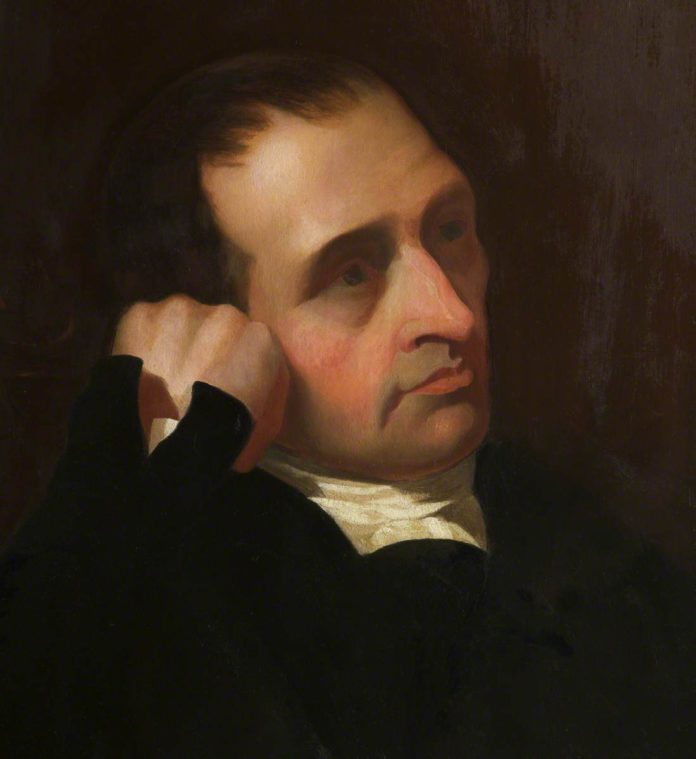For a man who invention of the Spinning Mule which was to transform the textile industry across the region and further afield, the box of documents that was delivered to the curator of the Bolton museum on the eve of the celebrations of the centenary of his death may have come as quite a surprise.
They contained letters written by Crompton and his family in which they seemed tortured by the fact that his life had been soured by both financial hardship and a lack of recognition for his discovery.
Born in Firwood Fold , near Bolton in 1753,the only son of a family of farmers who as many did, supplemented their income with working cotton on a hand loom and would in 1780 invent the spinning mule, a combination of the spinning jenny and the water frame.
He would decline the chance to patent it, instead believing, it is said that the world should have the benefit of his ingenuity but would nearly forty years later survey the spinning industry to discover that between four and five million spindles were working using his invention and applying to Parliament to claim a national grant which was given to him for the amount of five thousand pounds.
It is said that the misfortunes of this reticent and shy weaver were a result of his family upbringing.The family moved to become tenants of a decayed mansion in Hall i’th’ wood not long after his birth and it would remain his home for twenty five years.His father died not long after and Sam was brought up by a domineering mother who quickly involved the rest of the family in the spinning business.Crompton would write to Sir Joseph Banks in an autobiographical letter that “as soon as I was able, a daily task was assigned to me to spin” and at the age of ten was sent away for a year to learn the trade.
On his return he would work on the quilting loom but would begin in the 1770’s to experiment with ways to improve what he considered the unsatisfactory of the single jenny spun yarn used in the quilt.”If i could find one good yard long thread,there were ten bad ones.”
In 1779 working from the upper rooms of the decayed mansion, he would produce a forty eight spindle machine,which would be capable of spinning cotton yarn strong enough for warp and yet thin enough to rival the best fabrics that still came from India and the Far East.
As he took the machine to market, this shy individual was pestered by industrialists who would attempt to steal the design and lacking the money to invest in a patent, was forced to rely on subscriptions.
For the moment his design was only to be of use in hand operated looms and would not rival the inventions of Hargreaves or Arkwright but would reject two offers of partnership, one from Robert Peel senior, preferring to go it alone.
Moving to Bolton, he set up a weaving business, making rovings and producing yarn for which eh employed his own weavers.He made a decent but would see other make a lot more out of his invention and in 1803, his friends from Manchester, John Kennedy and G A Lee collected £444 pounds on his behalf, setting him up with a top floor factory in Back King Street, Bolton with a power loom.He completed his census of the cotton industry in 1811 and with the help of the elder Peel and Lord Stanley petitioned Parliament for the grant.
He felt that fifty thousand pounds was a reasonable settlement, the five thousand that he got was frittered away to his sons, who would run away to sea and failed business dealings which included a bleach works in Darwen and a mill which was swept away by floods.
The last years of his life were spent in comparative poverty, his drunken daughter pawning his personal belongings.When in 1825 he was given an annuity to spend on a break in Harrogate, he had to hurry back to Bolton because his daughter had written to him to say there was no money to pay the rent.He died the following year according to his doctor of a gradual breaking up of his constitution without any visible disease and in debt.His last pocket book showed an unsteady hand filled with delivery notes and unsettled bills.. .
His Hall i’th’ woods home,which had its origins in Tudor times was bought by Bolton Corporation in 1927 and was made into a museum which still stands open today.
It stands to the North East of the town and whilst the urban sprawl has surrounded it,you can still see its position on a rocky knoll overlooking the river Eagly, a tributary of the Irwell, the remnants of the woodland which gave it its name was still there.
If you stand in the chamber which extends over the old dining room it is still possible to picture a young Crompton pondering and working on his problem in his spare hours when not required by his domineering mother .
In 1988 the last spinning mule in Lancashire was closed.It had been operating for over a hundred years in a stone building down a side street in Ramsbottom.Kept going on ever dwindling spares, still filling 740 spindles an hour with cotton but no longer able to compete with modern processes.
In death,Crompton has been given a warmer place in popular remembrance than many of his contemporaries.He never recognised the commercial possibilities of his invention, he would contemplate even destroying the machine rather than give it to the trade and it was part of his tragedy that in an age when business adventurers made their mark, he had not the character to compete with them







